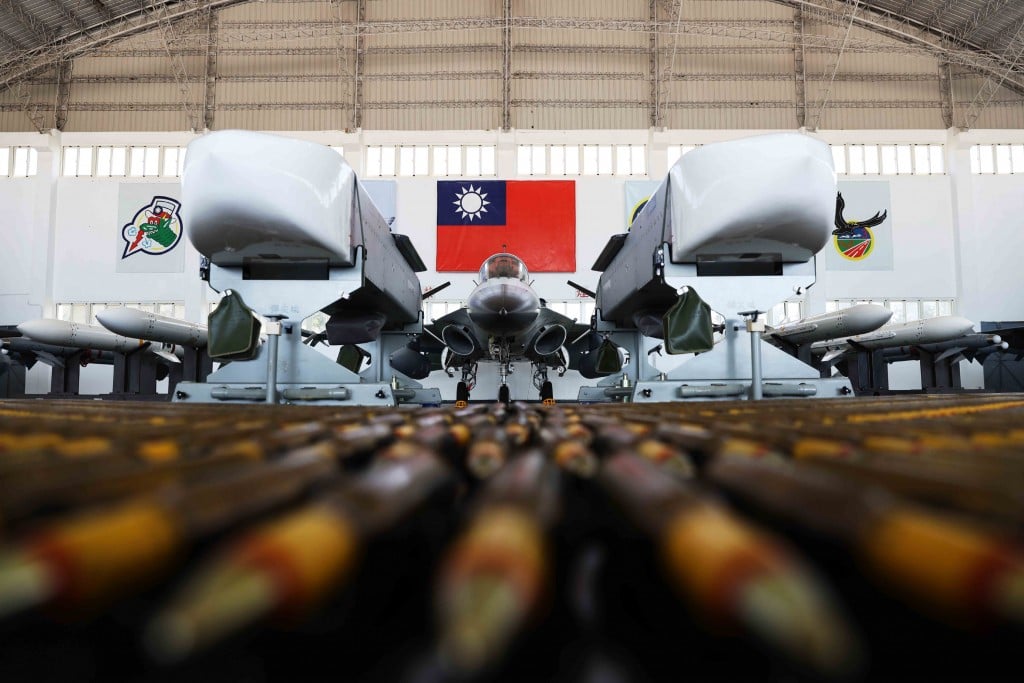
The U.S. needs to show Beijing that it can stop China if Chinese President Xi Jinping were to risk a cross-strait invasion to bring Taiwan under Chinese control, a congressman involved with military innovation this week.
The United States must realize that it cannot rely on the Taiwanese people to be the only fighters, as is the case in Ukraine, if China invades Taiwan, Rep. Seth Moulton, (D-Mass.) and co-chair of the congressional Future Defense Task Force, said Tuesday at a Hudson Institute event. Washington would need to commit American forces to the fight.
There are “lots of parallels in legacy motivations” between the actions of Russian President Vladimir Putin’s unprovoked invasion of Ukraine and Xi Jinping’s threats to forcibly unite the self-governing democracy with the mainland, he said.
Taiwan would need to have in place the weapons, systems and trained forces to hold off the invasion long enough for the United States to overcome a blockade of the island to come to its aid, Moulton said. Ukraine, on the other hand, is being supplied overland by rail and highway.
With Ukraine, the better late than never approach worked, but that is not an option with Taiwan, Moulton said.
The Biden administration rallied NATO and the European Union to Kyiv’s defense with arms and ammunition, economic aid, refugee relocation and imposed severe sanctions on Russian leaders, business leaders and its commercial sector.
Ukraine showed “the usefulness of the national guard” in blunting the Russian invasion. Many of its members were well-trained and had combat experience in the Dombas region fighting separatists backed by the Kremlin since 2014. Kyiv took preparedness seriously, Moulton said.
“Taiwan is behind, but making progress,” he said.
The value of asymmetric warfare –“a $1,000 drone” destroying much more expensive tanks – was also made clear on land and in the Black Sea on Russian warships, he said. Later, Moulton cited the Ukrainians’ use of Starlink, a commercially available internet system, that gave its communications networks redundancy when attacked as another successful Ukrainian use of unconventional means in combat.
Where resiliency is required for nuclear threats, using commercial networks would also give U.S. forces redundancy in conventional operations, he added.
The Pentagon did “a remarkable job of sharing intelligence with the Ukrainians [and] information with the world” on Russia’s intentions before Feb. 24 and its intentions to use disinformation campaigns to cover “false flag” operations and lies over the fall of the government in Kyiv, Moulton said.
Moulton warned that Putin’s threats to use nuclear weapons in Ukraine had to be taken seriously since it is part of Moscow’s military doctrine. “That is a risk for humanity” that Russia could be willing to take.
Similarly, he viewed advancing artificial intelligence technology in warfare without having “norms, treaties and conventions” in place, as there has been with nuclear arms, as increasingly dangerous.
“China doesn’t care about civilian casualties; China doesn’t care about collateral damage” in using all the weapons in its arsenal, including artificial intelligence, “the future of warfare,” Moulton said.
The goal of the House Armed Services Committee Future Defense Task Force is “to drive the forces to do more and do it quickly,” he said. In its “report card” on progress in areas like asymmetric warfare, Moulton said, “the Army and Navy are dragging their feet” citing size of force and infrastructure as reasons progress seems slow.
Those were poor excuses for slow response if Taiwan reached a military crisis point, he said.
On the other hand, the Marine Corps and Air Force are “moving but not fast enough” to meet new challenges posed by a rapidly modernizing Chinese military, Moulton said. He singled out the Defense Innovation Unit for its cut- through- the-red- tape of the acquisition process as a success in adopting existing commercial technology for the Pentagon’s use.
He added while Congress has approved a number of authorities allowing flexibility in recruiting and retention as well as weapons systems development, the services have been slow to use these tools. At the same time, Congress itself has blocked the services’ moves to divest themselves from legacy systems to invest more in future technologies, creating more challenges to paying for future modernization.





